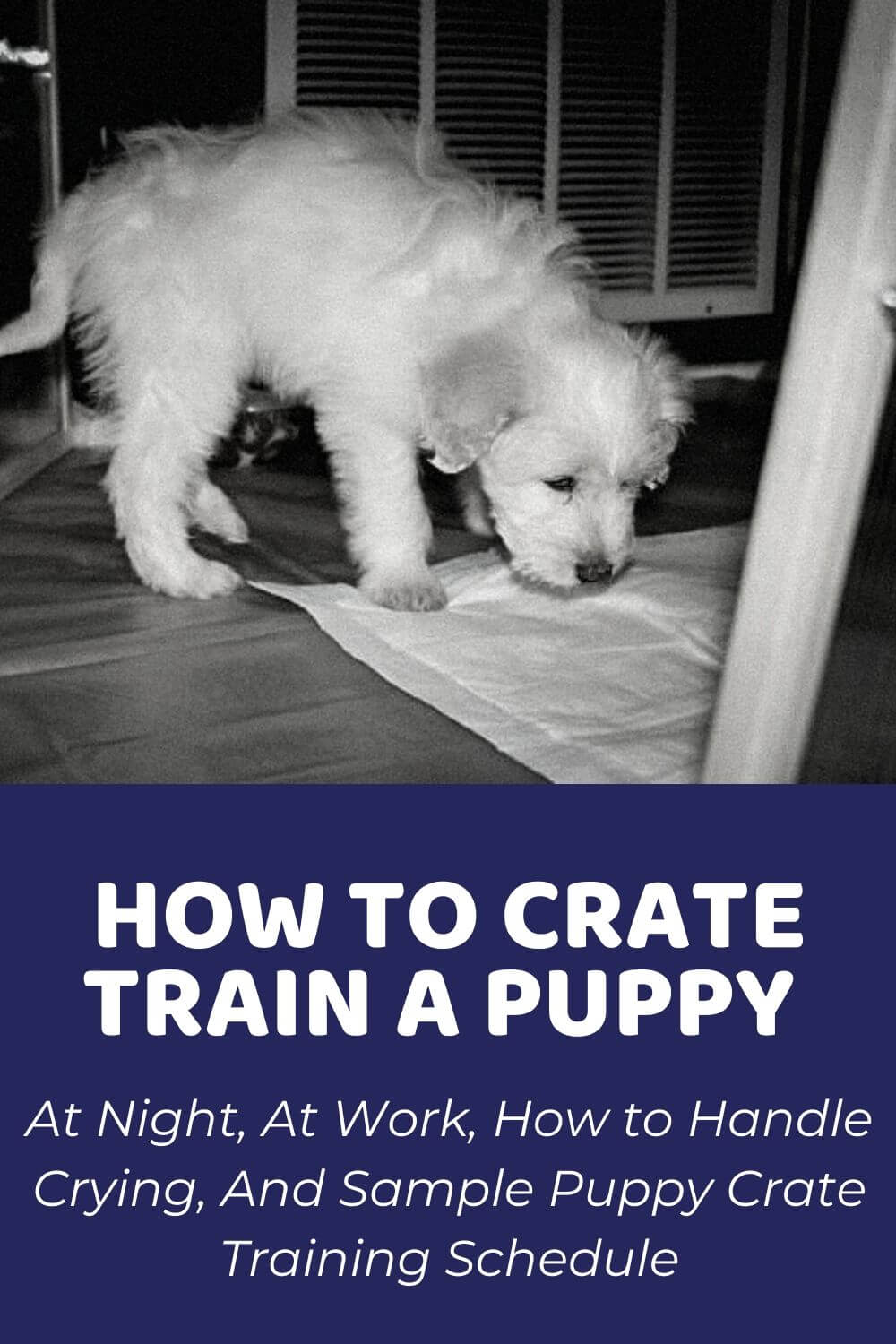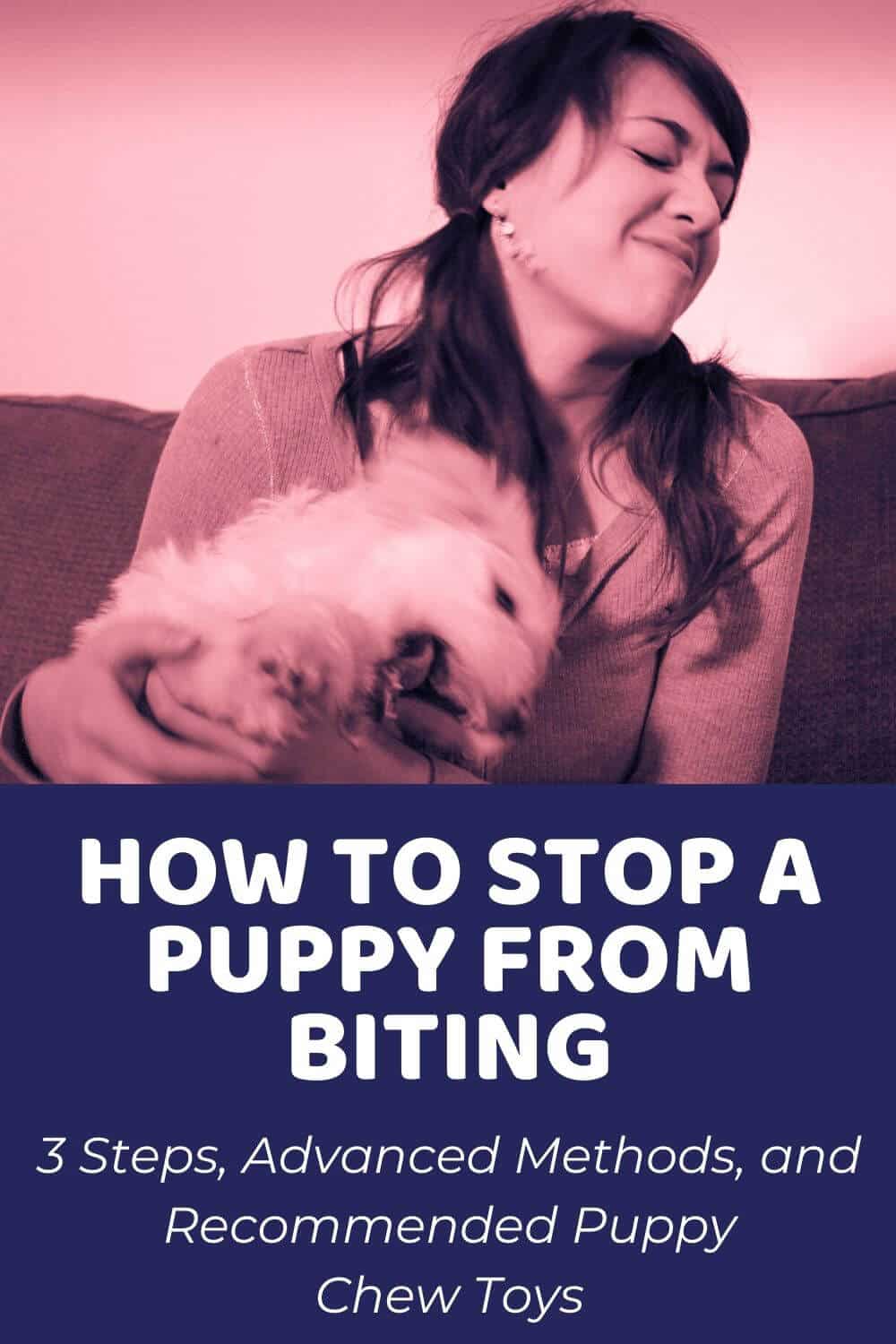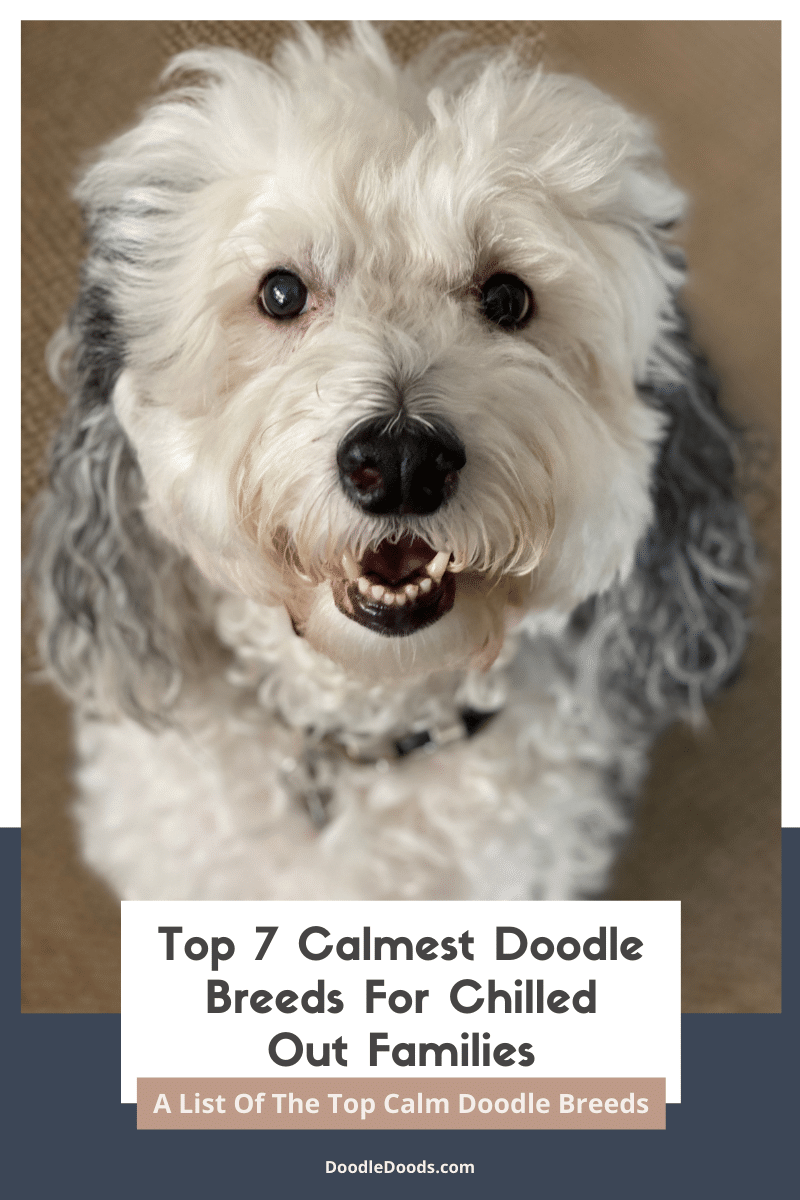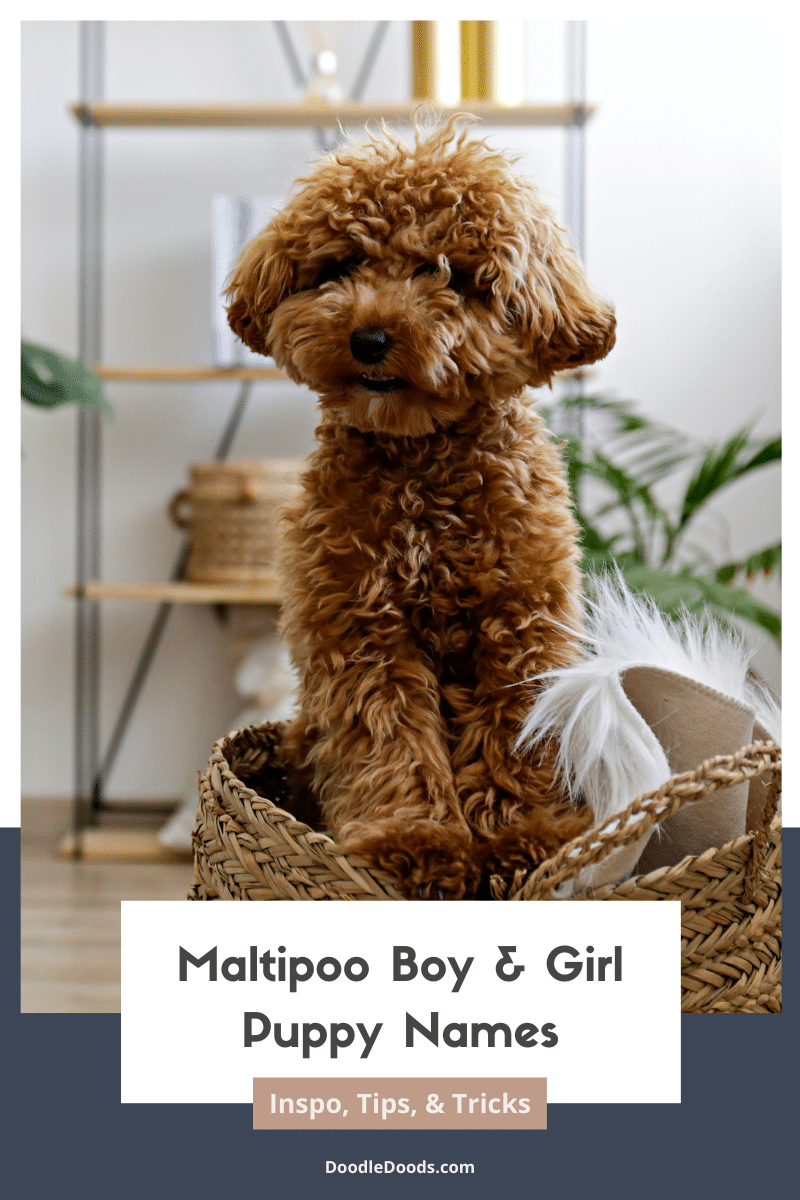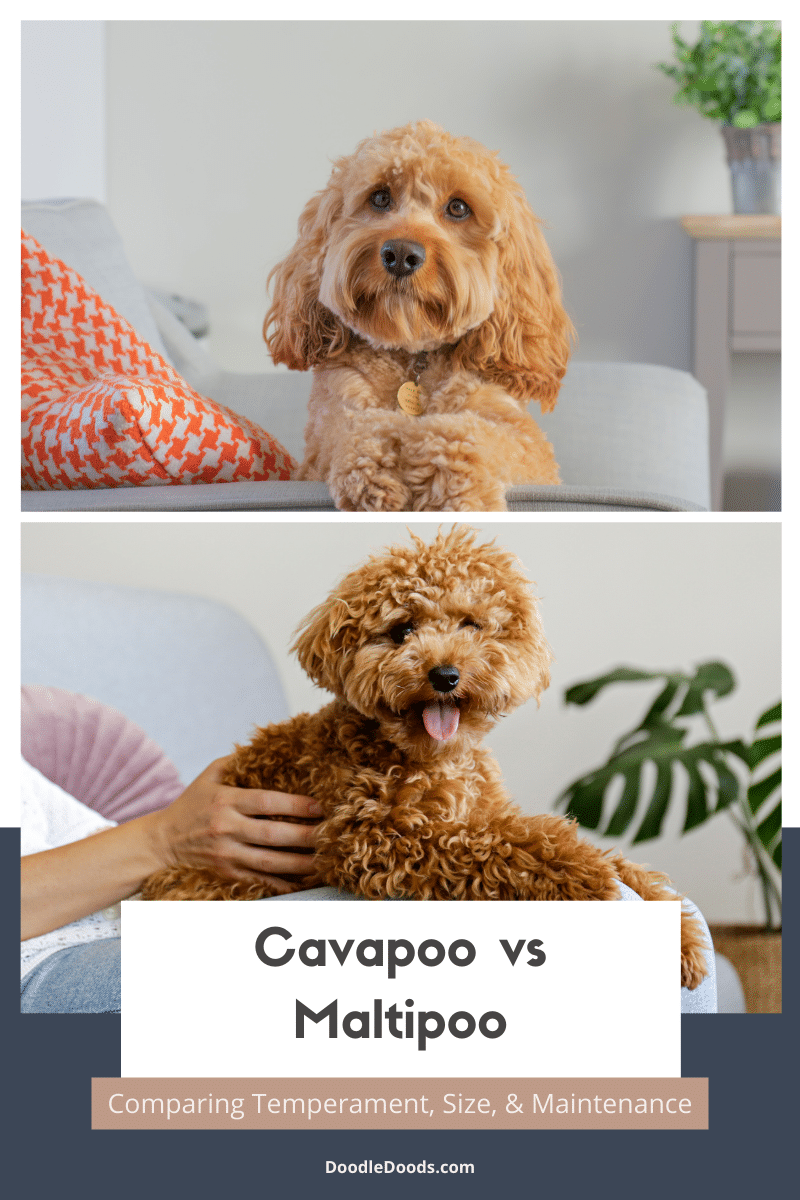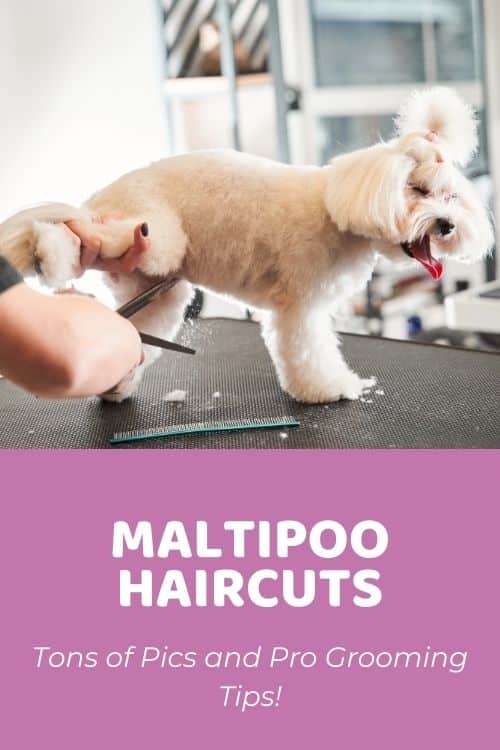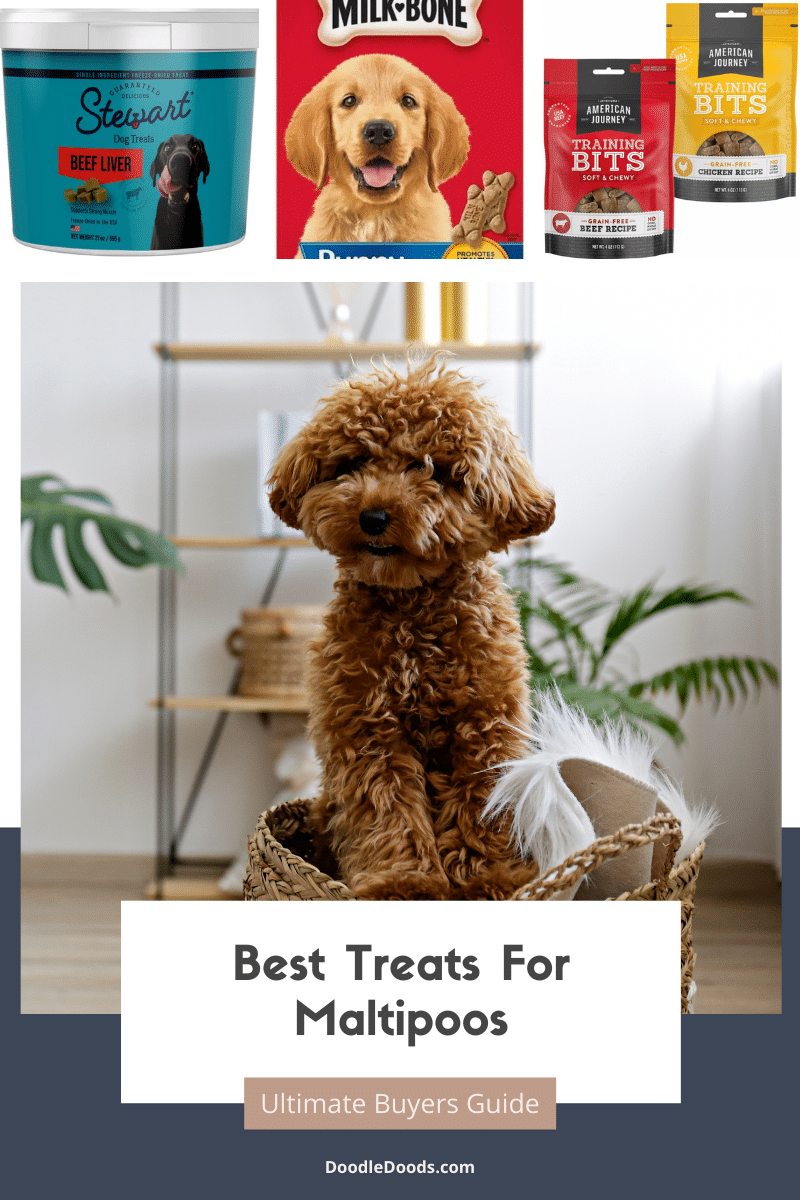If you’ve just adopted your new Maltipoo puppy or about to do so – congratulations! Puppyhood is a wonderful time, and the years to come with your new best pal are even better. But, of course, with dog ownership comes the inevitable process of training a Maltipoo. Don’t fret, though! If you’re well-prepared and know what you’re doing (and also have some patience), then you’ll be all set to successfully raise your little puppy into a well-behaved and confident dog.
In this guide, we’re going to talk about the various Maltipoo training methods, discuss the common issues and how you can tackle them, and many other tips and tricks for you to help you on this special journey. So, if you’d like to do everything on your end to set your pup up for success, then keep on reading.
Table of Contents
- Training A Maltipoo: What’s The Best Age To Start Training Your Maltipoo Puppy?
- Maltipoo Training 101: How To Train A Maltipoo
- Training A Maltipoo: Sample Routine
- What Is The Best Way To Train A Maltipoo Puppy? The 4 Best Obedience Training Methods For Your Maltipoo
- Maltipoo Training: Essential Items For Training Your Maltipoo
- Training Maltipoo: Common Issues & How to Tackle Them
- Need Some Extra Help When Training Your Maltipoo?
- Training A Maltipoo: Frequently Asked Questions
Learn How to Care for Your Doodle Puppy!

Perfect for first-time Doodle parents, get ALL your questions answered, including questions new Doodle parents don’t even think to ask.
Plus, get $700 worth of Bonus Materials for FREE, including:- Doodle Parenthood Community and Support Group ($190 value)
- Doodle Puppy Growth Tracker ($20 value)
- EMERGENCY Cheatsheet: When To Call The Vet Immediately ($50 value)
- HELP! Button ($145 value)
- And SO MUCH MORE!
Training A Maltipoo: What’s The Best Age To Start Training Your Maltipoo Puppy?
We admit, training a Maltipoo can sound frightening at first. However, there’s nothing you should be scared of! Rather, this just indicates that you’re taking this huge responsibility of becoming a new pet parent seriously, and want to do everything in your power to support your Maltipoo’s growth and development.
You might also be wondering – are Maltipoos easy to train? Luckily for you, these little Doods take after their Poodle parent, known to be one of the world’s smartest dog breeds. In addition to that, the Maltese has also gained much recognition for its high levels of intelligence and eager-to-please personality, even though the Maltese can be a bit stubborn from time to time. Nonetheless, these qualities and traits make up for the perfect recipe for training a Maltipoo.
But when should you start with Maltipoo puppy training? The answer is very simple – you should start training your Maltipoo the moment you bring them home (albeit maybe not as intensively during those very first days at home). This is the most effective way for your new puppy to soak in all the crucial life skills, behaviors, and habits for them to grow into well-behaved adults. Not to mention, puppies thrive on routines and schedules, as it provides them with a sense of security.
Luckily, most reputable breeders start training their puppies long before they’re adopted. So, if you’re getting your Maltipoo from a reputable breeder, it’s very likely that they’ve already been introduced to crate training, potty training, basic manners, and even early socialization.
Word Of Caution
Nonetheless, keep in mind that an 8 week old puppy is likely not going to be fully house trained when you bring them home. This process takes time, sometimes even months! However, it sure makes everything much easier for you and your new pooch if they’ve been introduced to potty training before adoption.
Maltipoo Training 101: How To Train A Maltipoo
So, how to train a Maltipoo puppy? Training a Maltipoo involves many different considerations, tips, and methods. But the backbone of your Maltipoo’s training routine starts with a good daily schedule and early socialization. Let’s quickly discuss this.
Establish A Routine & Stick To It
First and foremost, you want to establish a good daily routine that you and your pup follow every single day. This has many benefits when training your Maltipoo. For starters, as you bring your new puppy home, they’ll likely be a bit scared and confused as they’re in a completely new place with completely new “housemates”, away from their littermates and their mama. However, a daily routine will help your pup feel more confident, since they’ll soon learn what to expect when each day starts and rolls into the evening.
Secondly, establishing a daily routine helps you schedule in all the mealtimes, potty breaks, naps, exercise, playtime, and also bonding time with you. For potty training, this is absolutely crucial, as they’ll soon learn when and where they can go potty. A bit later on in this guide, we talk about this in more detail.
Socialize Your Puppy From A Young Age
Another essential element of Maltipoo training is to start socializing your new puppy from a young age. You should safely introduce your new pup to people of all ages, including children, and also let them socialize with other pets. However, we cannot stress enough how important it is to do it safely.
Before you take your puppy to the local dog park, make sure that they’re fully-vaccinated and have the green light from your vet.
Socialization serves many purposes. Firstly, it’s a great way for your new puppy to get accustomed to spending time around different people and pets. They’ll also learn the proper way to interact with others outside of the household. Secondly, this will help your pup to become confident in all sorts of situations, reducing the risk of anxiety and stress. And thirdly, since Maltipoos are outgoing by nature, they really do need those social situations to thrive.
Training A Maltipoo: Sample Routine
Now that we’ve covered the basics, it’s time to take a look at how you can build a proper routine that makes training your Maltipoo that much easier!
Tip #1:
Potty time right after waking up. The first thing you want to get done in the morning after your pup wakes up from its nighttime sleep is to go out for a potty. Needless to say, just like humans, dogs and puppies need to relieve themselves after a long beauty sleep. This will set the tone for the day, your pup will feel amazing, and you won’t have to deal with unexpected (ahem… not so unexpected) accidents in the morning.
Tip #2:
Next up, you want to have your pooch follow the same mealtimes each and every day. An easy way for that would be to schedule your dog’s mealtimes around the same time as you have breakfast, lunch, and dinner. This will also make a great time for bonding and socializing!
Tip #3:
Now that you’ve fed your pup, it’s time for another potty break, especially if you’ve got a young puppy! Puppies need to relieve themselves within 30 to 60 minutes after each meal (to be fair, more often than that as well), so make sure you provide the opportunity for a bathroom break. And as we said, young puppies generally need to go potty more often. Just to be on the safe side, you can take your pup out to pee and poop every hour or so.
Tip #4:
When your pup has had its meal and gone potty, it’s time to get some much-needed exercise. If you’ve got a very young puppy, don’t make them exercise for too long. After all, they’re still babies and they don’t have the stamina of a full-grown dog just yet.
Tip #5:
Don’t forget to take your pup out for another quick potty break after exercise. All of that running and romping around will surely put their metabolism working at full speed!
Tip #6:
Naptime. Eating and exercising is bound to tire out your lil’ Maltipoo. Make sure you let them rest plenty after they’ve had some fun and went potty. By the way, young puppies can sleep as much as 18 hours a day! They really do need plenty of beauty sleep to grow into strong, healthy Doods.
Tip #7:
Potty break after waking up. Once your Maltipoo has woken up from its nap, it’s time for another potty break. Remember, puppies need to relieve themselves after they wake up in the morning or after taking a nap.
Tip #8:
A key thing that helps you establish your Maltipoo’s training routine is to stick to the same bedtime routine every single day. Puppies and dogs thrive on set schedules and routines. Not to mention, it’s also going to keep your sleep habits in check! Oh, and don’t forget to take your Dood out to potty before going to bed. You don’t want to wake up to a mess in your pup’s crate (although that’s not uncommon for young puppies either).
Tip #9:
Since we have put a lot of emphasis on set mealtimes, it’s vital that you carefully consider your puppy’s age when scheduling in their brekkie and other meals. As a general rule of thumb, puppies should feed exclusively on their mother’s milk until they start getting their baby teeth – that’s around 3 to 4 weeks old. If you’ve adopted your pup from a reputable breeder, you’ll likely be able to bring them home around the time they’re 8 weeks old. By that time, you can expect them to be fully weaned, which means that they have been introduced to solid foods.
From 8 to 12 weeks old, you should feed your puppy about 3 to 4 times a day. Once your puppy gets to the 4 to 5 month mark, you can reduce the feeding times to 3 per day. And at 6 to 7 months of age, you can switch them to 2 meals a day.
When training your Maltipoo, you can follow this daily schedule as a guideline:
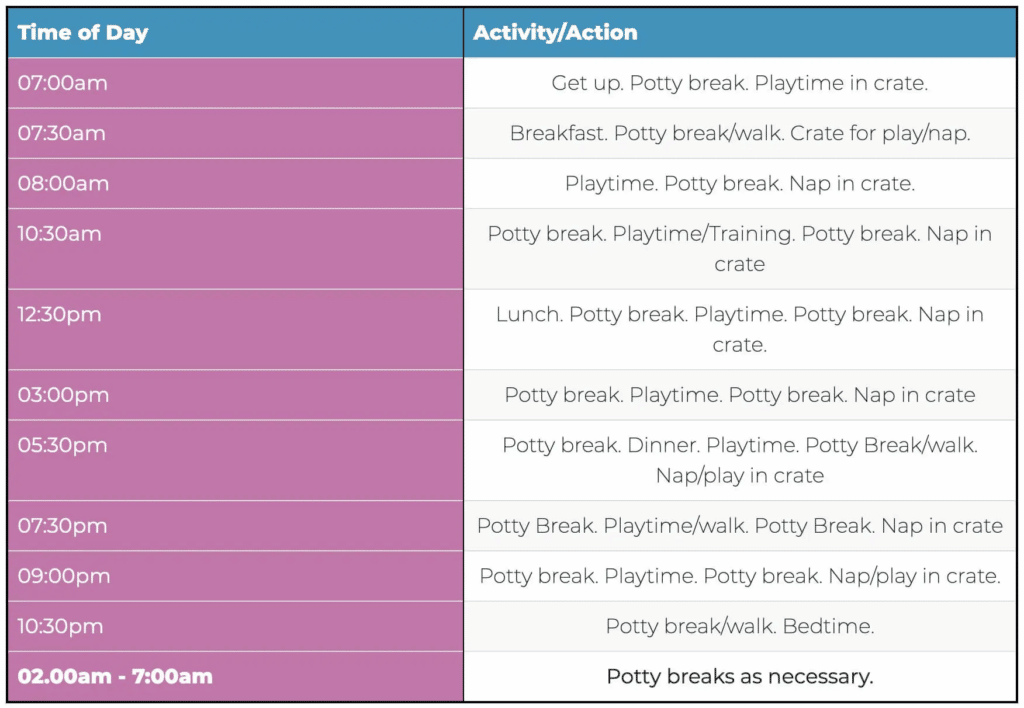
What Is The Best Way To Train A Maltipoo Puppy? The 4 Best Obedience Training Methods For Your Maltipoo
Positive Reinforcement
Positive reinforcement training is the number one best way to train your Maltipoo. It’s based on the concept of rewarding good behavior, rather than punishing bad behavior. With positive reinforcement, you reward your pup with small treats or verbal praise when they do something that’s expected of them. This creates a positive association and encourages them to keep doing the desired behaviors. In addition to being an excellent training method, positive reinforcement training also strengthens the bond that you share – a win-win situation for sure!
Clicker Training
Clicker training is a popular dog training method that uses an audible device to mark desired behaviors. In fact, it’s the preferred method by many dog trainers and dog breeders. It’s based on the idea of associating the sound of a clicker with rewards like treats or praise. When your pup does something right, you press the clicker before giving them a reward – this creates a positive association between the behavior and its result. Clicker training can help teach dogs new behaviors more quickly and efficiently than other methods since it allows for precise communication between you and your pup. AKC has an excellent guide on the clicker training method that we recommend you check out.
Mirror Training
Mirror training is another helpful method that you can utilize when training your Maltipoo. This training method is also based on positive reinforcement and clicker training methods. But, the main goal is to set an example for your pup and provide them with all the tools and the right environment for them to thrive in. Above all, as we’ve already mentioned, it’s your responsibility to provide your pup everything they need to succeed. Essentially, the idea is to not put the responsibility on your dog, but rather on yourself. Therefore, you need to send your pup the right signals, set an example with your own behavior, and stay consistent with training at all times.
Crate Training
Crate training is an excellent method that’s beneficial for all Maltipoos. The idea is to provide your puppy a safe and comfy place to retreat to. This will build their confidence while spending time alone, but also helps you keep them safe whenever you’re not around. In addition to that, it helps curb destructive behaviors and accidents around the house.
Additionally, crate training can help create structure in your pup’s life, which is important when it comes to teaching them the rules of the house. By creating a safe and secure environment for your Maltipoo puppy, you’re giving them an invaluable tool for learning how to adjust to their new home. Make sure that the crate is super comfortable and cushy, you can even place some chew toys and treats inside. And never use the crate as a form of punishment – this will backtrack all of the progress you’re making!
Maltipoo Training: Essential Items For Training Your Maltipoo
Of course, when training your Maltipoo, you’ll also need some items that will make the whole process easier. Not to mention, some of those are just necessary if you want to become a pet parent, regardless of how you approach the training regimen.
First and foremost, be sure to stock up on healthy puppy treats that you can give your pup whenever they complete a task or behave in a desired way. Dogs can be very much motivated by food, and the Maltipoo is no different!
We also strongly recommend that you get a proper dog crate for your pup, where they can retreat whenever they need some alone time in a safe place. This is obviously also needed for crate training. You also need a collar or harness and a leash for safe walkies in the neighborhood. In addition to that, don’t forget to purchase plenty of chew toys for your pup to express their natural chewing instincts.
Other items you need include your dog’s food and water bowls, a dog bed (or why not beds), as well as poop bags. After all, you wouldn’t want to know as *that* person who never picks up after their dog.
Training Maltipoo: Common Issues & How to Tackle Them
Although training a Maltipoo shouldn’t be that difficult in the first place, it’s not uncommon for our four-legged pals to encounter some issues along the way. Here we’ll list some of the most common problems that Maltipoos struggle with and how you can tackle them in a constructive manner.
Counter Surfing & Stealing Food
Although Maltipoos are rather small and they may not be able to get on your kitchen counters as easily as some larger dogs, they’re still often motivated and enticed by any food crumbs and bits you may have left behind.
The solution for this is rather simple – clean up any food scraps from your counters or floors as soon as you’ve finished preparing a meal. Keep anything that’s remotely appetizing for your pup out of their reach, place them in containers or cabinets where they won’t be able to munch on them. To prevent this behavior altogether, you should also withhold from feeding any table scraps to your pup. Instead, feed them their dog food during the scheduled mealtimes and give them treats when they behave well.
For more information on how to deal with counter surfing and stealing food, be sure to check out our full guide on this topic.
Jumping
Indeed, Maltipoos are rather small dogs so they won’t likely be able to knock anyone down when jumping on them. Still, this isn’t considered a desired behavior and it’s best if you’d teach your dog to not jump on people whenever they meet someone.
Firstly, you should properly socialize your puppy for them to learn how to properly meet and greet others. Secondly, you can utilize a verbal cue, such as “off” or “sit”. And lastly, you should never reward this type of behavior with praise, treats, or any sort of attention for that matter. For more detailed guidance, be sure to check out our full in-depth guide on how to teach your dog not to jump on people.
Barking
Maltipoos can be vocal dogs, especially if they feel the need to share something with you. It’s also not uncommon for them to bark whenever someone’s at the door. To tackle this problem, you need to first figure out what’s causing the excessive barking. For instance, if they’re barking because they notice someone outside from the window, you could remove the visual triggers by either taking your Dood to another room or drawing the curtains.
Another thing to consider is whether or not you’ve taken the time to properly socialize and desensitize your pup. Additionally, it may also indicate that your dog is lacking physical and mental stimulation, which could lead to excess vocalizations.
Our ultimate guide on excessive barking has excellent methods that can help you manage this issue.
Leash Pulling
Leash pulling isn’t just an issue for Maltipoos. In fact, most pups struggle with this, at least at the start. They’re just so extremely excited to get outside to explore and mingle! The simple solution for leash pulling is to stop whenever your pup starts pulling on the leash. Wait for them to calm down and stop pulling. Once they do that, reward them with praise and a tasty treat. Our guides How To Leash Train A Dog and How To Stop Your Dog From Pulling On The Leash will help you nip this behavior in the bud.
Digging
Even though digging stems from a natural instinct, it can quickly become destructive, even downright dangerous for your pooch. Oftentimes, excessive digging indicates that your dog is lacking physical and mental stimulation. So, if they’re bored, they resort to destructive behaviors. Make sure you let your pup get at least 30 to 60 minutes of exercise each day, plenty of playtime, and lots of mental stimulation.
Furthermore, we also recommend you dog-proof your backyard. And if your pup just cannot stop, you might have to provide them a designated digging spot in the yard. Obedience training will also go a long way!
If you’d like to learn more about excessive digging and the different methods to stop it, make sure you head out to this guide here.
Biting & Mouthing
Biting, mouthing, chewing, you name it. Dogs simply love it! In puppies, however, it’s often caused by the discomfort of teething. So, if they don’t have a healthy outlet for this instinct, they’ll soon start demolishing your hands and other household items with their sharp baby teeth.
The easiest solution would be to provide your puppy with lots and lots of puppy-safe chew toys to munch on. This should do the trick. You should also discourage them from biting your hands or feet – whenever you let them continue this behavior, they’ll learn that it’s acceptable.
Eating Socks & Non-Food Items
Dogs sometimes lack the knowledge whether or not something is actually edible. Sometimes, this behavior can even prove to be fatal. So, it’s vital that you prevent this issue altogether. Again, you want to provide your pup with plenty of mental and physical stimulation to keep those destructive behaviors stemming from boredom at bay. Secondly, make sure your pup has enough chew toys, and ensure that their diet is balanced and rich in nutrients.
You may also want to place all tempting items out of your dog’s reach, such as the TV remote or even your dirty socks and underwear. Likewise, don’t forget the importance of proper obedience training so that your pup knows what’s acceptable and what isn’t.
Potty Training
Potty training a Maltipoo isn’t necessarily difficult, but it does require lots of patience and consistency. So, how to potty train a Maltipoo puppy? As we mentioned above, you want to start with training as soon as you bring your new puppy home. Show them their designated potty spot and let them inspect it. Set a daily routine and whenever it’s time for a bathroom break, take your pup there. Always praise and reward your dog for doing their business in the right spot. However, you should never scold or punish them if an accident happens inside the house – they’re still learning!
When it comes to the Maltipoo, potty training isn’t any different than with other dogs. If you’d like to learn more about how to potty train your Dood, here’s a helpful guide with all the tips and tricks.
Need Some Extra Help When Training Your Maltipoo?
Understandably, you might find that some extra help along the way could not hurt. So, if you need some guidance on how to train your Maltipoo, we absolutely recommend this Online Puppy School by Baxter & Bella.
Need help with training?
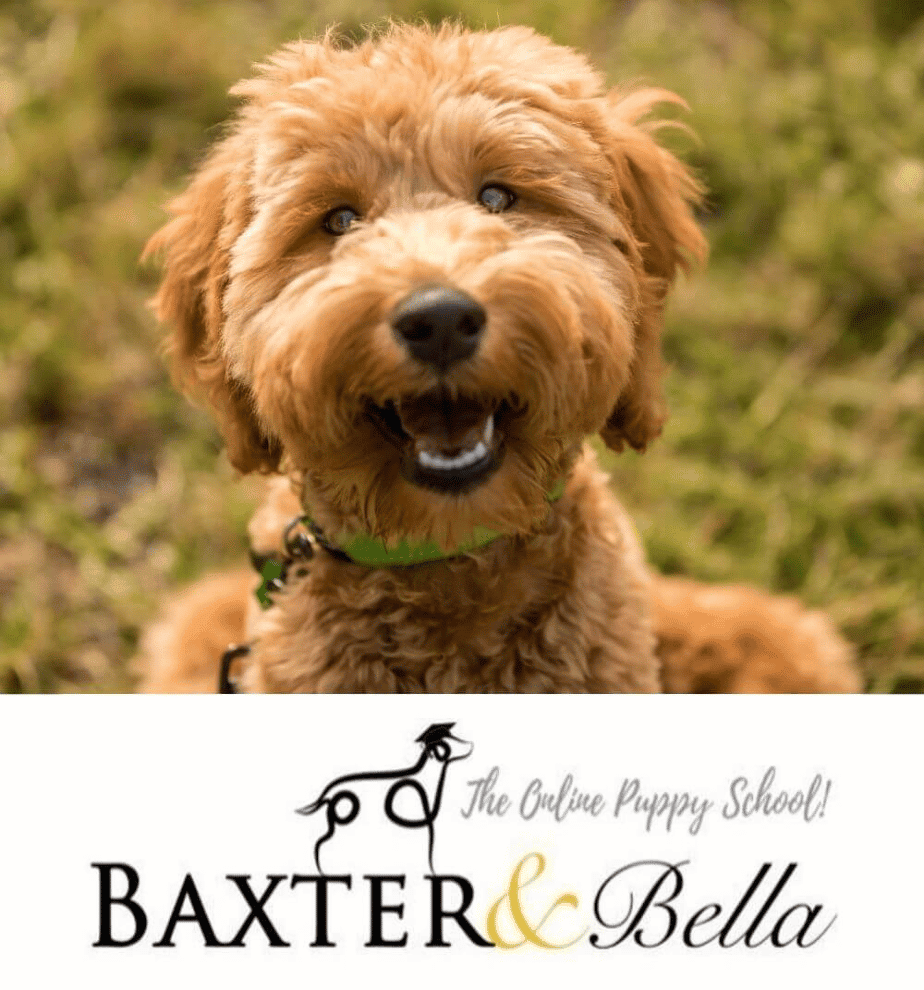
Use our discount code: DOODLEDOODS at checkout for an instant 25% off of BAXTER & BELLA, The Online Puppy School – an incredible value on their lifetime membership!
Learn More About BAXTER & BELLATraining A Maltipoo: Frequently Asked Questions
It’s only natural if you’d like to know whether or not Maltipoos are easy to train. The short answer is that yes, they can be very easy to train. They’re rather intelligent little dogs – all thanks to their Poodle heritage. After all, Poodles are well-known for their high levels of intelligence! However, the key is to start as early as possible, preferably the moment you bring your new pup home, and stay consistent throughout all of their life stages. Yes, including the dreaded adolescence period, when they act as absolute teenagers with their fits and emotional outbreaks (well… maybe not so bad, but you get the point).
When it comes to training a Maltipoo, the best way to succeed is by using positive reinforcement training. This could mean that you reward your puppy with praise, treats, or toys. You can also utilize the clicker training method, where the clicking noise hints at the impending treat or praise for completing a task successfully. Another excellent method is the mirror training, which also combines elements of positive reinforcement training methods.
Discipline holds an integral part in training a Maltipoo. However, we mean this in its most positive sense – it’s your responsibility to stay disciplined, consistent, and set an example for your puppy. However, if you’re thinking about taking action when your puppy doesn’t behave as you want them to, you should keep in mind that there’s no room for scolding or punishment. Moreover, you should never yell at your pup or otherwise behave in an aggressive manner when they don’t get it right. They’re still in their puppyhood! They’re still learning everything, so accidents and unwanted behaviors are bound to happen from time to time. It’s all part of the process. Just keep on staying positive and consistent and your pup will soon catch up.
Training A Maltipoo: Final Thoughts
So, there you have it! That’s everything you need to know about training a Maltipoo. We hope this article has been a helpful resource so that you can be fully prepared for once your new puppy gets home. Just remember to start early, stay consistent, and don’t lose your patience. And soon enough, you’ll have the most amazing, well-behaved, and confident little pal that knows exactly how to behave in any situation.



